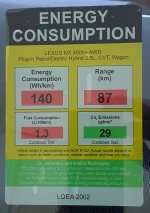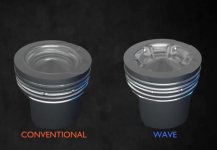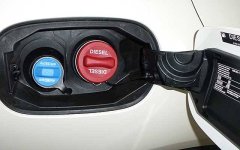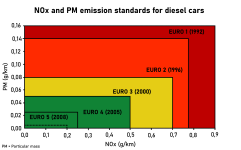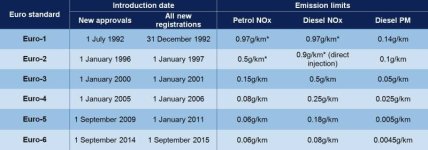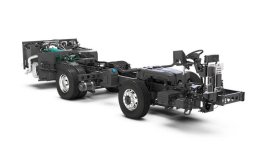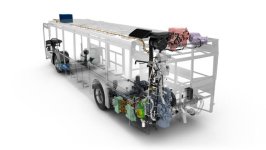Sean,
I didn’t cover your question about Volvo going full electric, and if they have shot themselves in the foot.
To answer you fully, it needs a little explanation.
Sorry for the lengthy explanation below.
Their new C40 recharge model (based on their XC40) has a range of 418km.
This is the sticker range which EV’s have similar to the stickers we find on all other new vehicles sold in Australia.
As you can see the Hyundai has a better range than the Volvo.
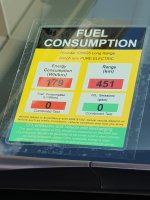
As yo can see (this is the principal of James Ruse Agricultural High Schools new car where my wife works) the sticker gives us W per km, and a total range.
W per km, is a good base to look at when considering an EV, this is similar to L/100k, the lower the usage, the more range per fill.
Like the stickers we find on ICE vehicles, this would be a “best case scenario” test.
I would have liked to have seen a combined score shown, as our trucks certainly differ in W/hour based on topography.
All EV OEM’s do offer (at an additional cost) complete home charging solutions with their vehicles.
From simple plug into a power point chargers, to hard wired high amperage chargers. Of course, this is based on what type of supply you have at your premises, if you have solar or not etc etc.
In a some cases (but not all) the domestic batteries that can be fitted to a house may not be acceptable to dump straight into an EV, some can, but you will need to check with the manufacturer of the battery to see if it can.
A Tesla wall, can do all things, but they are also up to four times more expensive than your typical home or domestic battery.
Normal home batteries in some cases, can be used as a UPS (Uninteruptable Power Supply) in the case of a power outage, and some can not, you will also need to check with the battery supplier.
Of interest, my domestic battery can be used as a UPS in a power outage, but once flat, it can not recharge again via the solar panels IF the grid supply is still out.
A Tesla wall can, as it also has a UPS within, but as mentioned these batteries are very expensive.
The battery needs an external, or other power supply to switch over to charging, so if the power is still out, it can’t switch over.
It’s not to often we have a power outage in this day and age in normal suburbia, and if we do, a normal battery with a UPS function will work fine as the outage may only be for a number of minutes or under an hour.
The UPS function on a domestic battery is all based on the load applied to it.
If the load exceeds its rated power, it will switch out and now power will be supplied.
So, what I am saying is that all EV’s Will come with their own home charging solution.
The higher amperage ones can do a rapid fast charge to around 80% of battery capacity, however plug in ones don’t have this capability.
The idea is to probably half deplete the battery, top up overnight to 100% and away you go.
The key word here is overnight.
This will use grid power IF your battery is unacceptable to charge the EV battery.
The above Hyundai IONIQ has a 72.6kW/h battery, Brian’s and my batteries are 10kW/h batteries.
kW/h is how many kW, electricity is delivered or consumed per hour.
You can now see why normal batteries can’t do this.
My wife is wanting her next car to be an EV. She still works full time. Her return traveling distance from our house to Carlingford every day is 80km, X five days is 400km per week. This does not cover, shopping on the way home, visiting her mother etc etc, so mid week charging would be a must.
How do we do this, overnight and pay for grid usage, or does she leave the car home and charge during the full day with the help of the solar system, that will be ok, IF the weather is good and the system is working at full capacity for the day.
The main things are, how far can the car go without charging, how do I charge it and when.
All of these things need to be considered when buying any type of EV.
At Volvo, we have a few new terms when it comes to EV’s
Range anxiety, charging window, charging opportunities etc etc
So getting to the point of your question.
If we use the rounded figure of 400km, on the Eastern seaboard, there are quite a few chargers of the high amperage available.
That means roughly a 30 minute stop to rapid charge your car to 80% of its range.
Sounds ok, after roughly 400k’s a 30 minute stop sounds good right?
Agreed, however during peak holiday seasons, some charging stations, service stations or service centres along our Eastern seaboard are overwhelmed with people wanting to do this 30 minute recharge. We have all seen the massive queues at these charging stations similar to a petrol station selling cheap fuel, long long queues.
Once you have waited for a charging point, you then have the 30 minute charge time.
This is the potential issue with EV charging when the EV is intended for interstate or long distance travel.
It all depends on the amount of charge points available, and of those, which ones are capable of rapid charging.
Also, the OEM’s state that battery life can be shortened by always using rapid high amperage chargers.
For those of us to have been lucky enough to travel through Europe, we have seen the massive banks of chargers at the huge service centres dotted along all of the major motorways.
Some I have seen have over 50 high amperage charge points.
The best I have seen here on the Hume Highway has been 6 at one service centre.
You can see how this is going.
Our major fuel retailers are doing huge work in installing rapid chargers at most of their service stations, but there will only be a few at best, and as we know, there can be massive distances between service centres here unlike the UK or Europe.
I do know it’s a work in progress, and if you buy one of these EV only Volvo’s, it will just take some planning to do some of these extended trips.
I know when I go visit my extended family of nephews & nieces in Port Macquarie and Narooma, I don’t want to factor in a 30 minute stop, but that’s me.
Brian with his pack of pooches may love this 30 minute layover.
The EV revolution may completely change how we do everything, from work travel to holidays.
It does seem that all types of EV are here to stay, and with the rules and regulations for nearly all western nations are to be green and environmentally friendly.
It’s funny how a lot of other countries, don’t give a crap about this, and are still building coal fired generators, and have no interest in emissions standards for their vehicles.
Most OEM’s have now put a final date of ICE production, and this is approaching rapidly.
Volvo car really threw the cat amongst the pigeons with this announcement.
Maybe it will force the hands of other OEM’s and the infrastructure companies.
So we all need to consider this moving forward.
For my wife and I, our plan is to still buy the diesel Kia Carnival which will be used for our extended drives interstate trips etc, and an electric vehicle for all local drives and her work trips.
Kia have announced that possibly in 2023, a hybrid power train may be available for the Carnival as it’s underbody twin the Sorrento, already has this option in Oz.
So out of interest.
I was in Queensland at my head office a couple of weeks ago.
At Hertz I can pick any car I want due to my Hertz status.
I chose a Toyota RAV4 hybrid, purely to check what the hybrid was like.
I have driven the diesel Carnival extensively, and I can easily achieve a combined usage of 5.5L/100k without too much trouble.
The RAV after 4 days of me driving it for economy to the best f my ability achieved a combined usage of 7.4L/100k.
Even with using the lightest throttle pressure I could, the engine always cut in even when traveling on a flat road.
For me, I feel a hybrid makes people feel they are doing the right thing for the environment, but doesn’t quite deliver.
I would like to hear from others re their experience with any type of EV.
This is the latest I can see re state government announcement.
More than 500 new fast and ultra-fast charging bays are set to be built across NSW to recharge electric vehicles (EVs) in just 15 minutes.

www.nsw.gov.au



